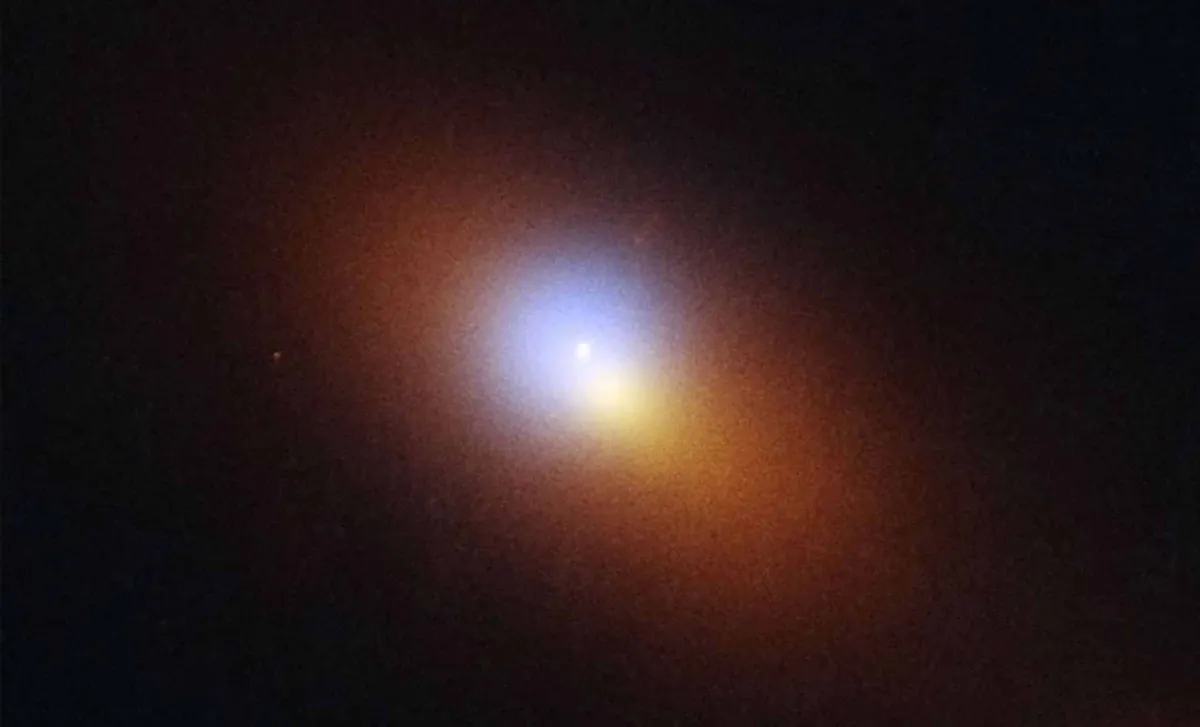
Astronomers utilizing NASA’s Hubble Space Telescope have made a groundbreaking discovery, revealing the first direct evidence of a wandering supermassive black hole in action. This black hole, designated AT2024tvd, was observed tearing a star apart in a rare phenomenon known as a tidal disruption event (TDE) located 600 million light-years away from Earth. Its discovery, far from the conventional understanding that these massive entities reside solely at the centers of galaxies, is reshaping the way scientists study black holes.
Found a staggering 2,600 light-years away from its galaxy’s core—home to a much more massive black hole weighing approximately 100 million times the mass of the Sun—AT2024tvd challenges long-held assumptions about the location of supermassive black holes. This discovery has been meticulously detailed by researchers from NASA and UC Berkeley, highlighting the collaboration between ground-based telescopes, such as the Zwicky Transient Facility, and space observatories like Hubble.
Tidal disruption events are relatively scarce occurrences that take place when a star ventures too close to a black hole, succumbing to its overwhelming gravitational pull. This process, often referred to as “spaghettification,” stretches and distorts the star into a long, thin shape reminiscent of spaghetti. Such events typically generate a flare of light detectable across a spectrum of electromagnetic radiation—from X-rays to radio waves. The fact that astronomers have captured a TDE from a black hole located so far from a galaxy's center marks a significant milestone in our understanding of rogue supermassive black holes.
Lead study author Yuhan Yao from the University of California at Berkeley emphasizes the implications of this groundbreaking find, stating, “This discovery will motivate scientists to look for more examples of this type of event.” As the first offset TDE identified through optical sky surveys, AT2024tvd opens the door to the potential discovery of more wandering black holes in other galaxies. This could revolutionize the way researchers approach the search for rogue black holes.
While the existence of multiple black holes within a single galaxy is not surprising—especially given the cosmic collisions and mergers that occur over time—the identification of a black hole located so far from its galactic core is indeed remarkable. Astronomers have long theorized the existence of scattered rogue supermassive black holes, yet concrete evidence has been elusive. This discovery marks a significant advancement in the ongoing quest to identify these mysterious entities, providing new methodologies for tracking them in the future. Ryan Chornock, a professor at UC Berkeley, notes, “This discovery points to a population of black holes that we didn’t even know existed.”
The peculiar position of AT2024tvd raises intriguing questions regarding its origin. How did it end up so far from the galaxy’s center? One theory suggests it may have been ejected during a violent interaction between multiple black holes. Alternatively, it could be a remnant of a smaller galaxy that merged with a larger one over a billion years ago. Should this rogue black hole be the product of such a merger, it might eventually drift back toward the galaxy’s core, possibly leading to a merger with the more massive black hole already present. Such an event would produce detectable gravitational waves, which could be observed by future space-based observatories like the Laser Interferometer Space Antenna (LISA), set to launch in 2035.
This landmark discovery not only highlights the existence of wandering supermassive black holes but also paves the way for future research into this fascinating field. The identification of AT2024tvd is merely the beginning; as astronomers continue to conduct comprehensive sky surveys, more examples of rogue black holes are likely to be uncovered. Yuhan Yao stresses the importance of this event, stating, “Right now, theorists haven’t given much attention to offset TDEs. I think this discovery will motivate scientists to look for more examples of this type of event.”